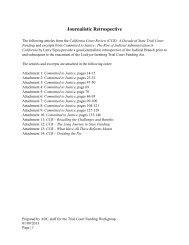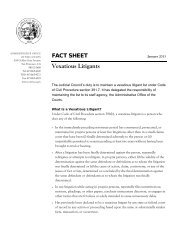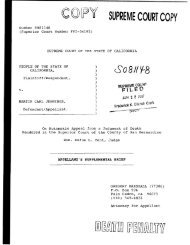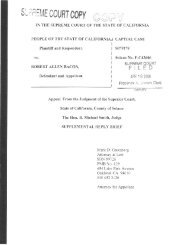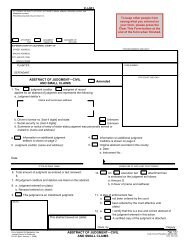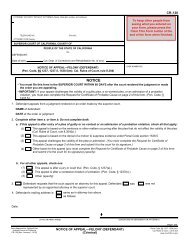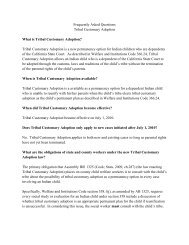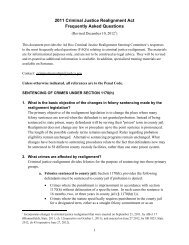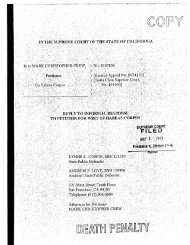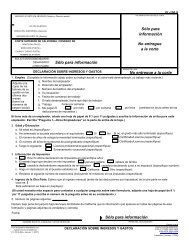Appellant, William Satele, Reply Brief - California Courts - State of ...
Appellant, William Satele, Reply Brief - California Courts - State of ...
Appellant, William Satele, Reply Brief - California Courts - State of ...
You also want an ePaper? Increase the reach of your titles
YUMPU automatically turns print PDFs into web optimized ePapers that Google loves.
conduct, conditions, or events occurring, either within or without the<br />
jury room, <strong>of</strong> such a character as is likely to have influenced the<br />
verdict improperly. No evidence is admissible to show the effect <strong>of</strong><br />
such statement, conduct, condition, or event upon a juror either in<br />
influencing him to assent to or dissent from the verdict or concerning<br />
the mental processes by which it was determined.<br />
Section 1150 is the codification <strong>of</strong> the traditional rule that allows evidence<br />
as to any matter that could have affected a juror, but forbids evidence as to the<br />
actual impact <strong>of</strong> such evidence on the minds <strong>of</strong> the jurors. (e.g. People v. Stokes<br />
(1894) 103 Cal. 193, 196-197.) Thus, the rule is that a court cannot consider<br />
evidence <strong>of</strong> what the jury actually "felt" or thought or how the jurors understood<br />
the instructions. (People v. Lindberg (2008) 45 Cal.4th 1, 53)<br />
As a result, courts necessarily have to engage in an analysis <strong>of</strong> how jurors<br />
as people will "normally" act. For example, in People v. Horning (2004) 34<br />
Cal.4th 871 the trial court allowed a criminalist to testify that the forensic evidence<br />
was not conclusive. Rejecting the defendant's contention the evidence should<br />
have been excluded as irrelevant and unduly prejudicial, this court explained that<br />
had the evidence been excluded the jury ''would naturally wonder if' any testing<br />
had been done on the bullets. (Id. at pp. 900-901, italics added.) Similarly, in<br />
People v. Ewoldt (1994) 7 Cal.4th 380, in describing the possible prejudice from<br />
the introduction <strong>of</strong> evidence <strong>of</strong> a defendant's prior uncharged bad acts, this court<br />
stressed the danger ''that the jury might have been inclined to punish defendant for<br />
the uncharged <strong>of</strong>fenses..." (Id. at p. 405, italics added.) Likewise in People v.<br />
Harris (1998) 60 Cal.AppAth 727, the court approved <strong>of</strong> the exclusion <strong>of</strong><br />
evidence on the ground that it was "remote, inflammatory and nearly irrelevant<br />
and likely to confuse the jury and distract itfrom the consideration <strong>of</strong>the charged<br />
<strong>of</strong>fenses. (ld. at p. 741, italics added.)<br />
Stating that a jury ''would naturally wonder" about something (Horning),<br />
"might have been inclined" to be influenced (Ewoldt), or was "likely to [be]<br />
121



